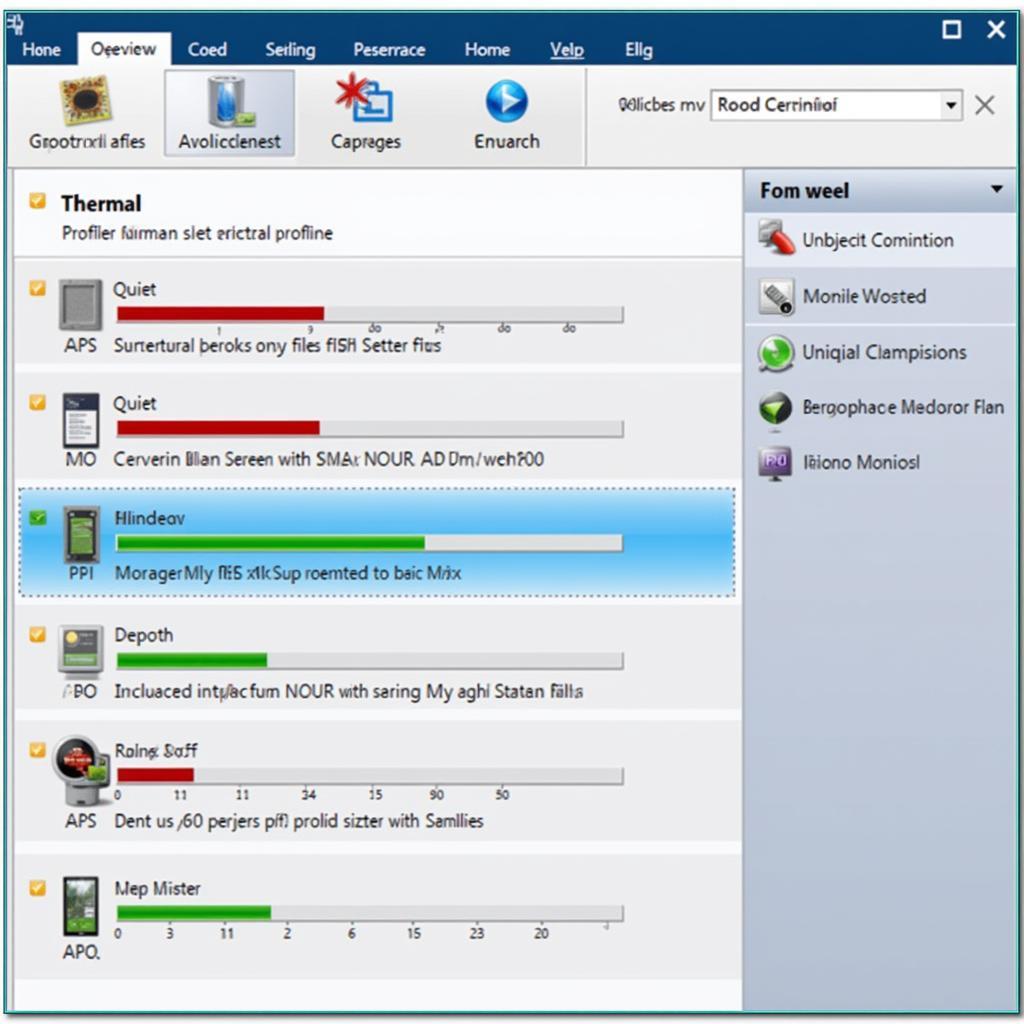Controlling the fan speed on your HP notebook is crucial for maintaining optimal performance and preventing overheating. Whether you’re experiencing excessive fan noise or suspect your laptop is throttling due to heat, understanding how to manage fan speed can significantly improve your user experience.
This comprehensive guide will delve into various methods for Hp Notebook Fan Speed Control, addressing common questions and concerns along the way.
Why is HP Notebook Fan Speed Control Important?
Your HP notebook’s cooling system, primarily consisting of fans and heat sinks, plays a vital role in dissipating heat generated by the processor, graphics card, and other components. Effective heat dissipation ensures stable performance and prevents damage caused by overheating.
Controlling your fan speed allows you to strike a balance between cooling efficiency and noise levels. While running fans at maximum speed might seem like the best way to keep temperatures low, it can lead to a distractingly loud fan noise. Conversely, low fan speeds, while quieter, might not provide adequate cooling under heavy workloads.
Methods for HP Notebook Fan Speed Control
There are several ways to control the fan speed on your HP notebook, each with its advantages and limitations:
1. BIOS/UEFI Settings:
The BIOS (Basic Input/Output System) or UEFI (Unified Extensible Firmware Interface) of your HP notebook might offer limited fan control options. Accessing the BIOS/UEFI typically involves pressing a specific key (e.g., F10, F2, Delete) during startup.
Note: BIOS/UEFI settings vary significantly across different HP notebook models. Consult your laptop’s user manual for specific instructions.
2. HP Command Center:
Many modern HP notebooks come with pre-installed software like HP Command Center. This application often includes a “Thermal” or “Performance Control” section that allows you to adjust fan speed profiles. You can typically choose from presets like “Quiet,” “Balanced,” and “Performance.”
 HP Command Center Fan Control
HP Command Center Fan Control
3. Third-Party Software:
If the built-in options are insufficient, consider using third-party fan control software. These applications offer more granular control over fan speeds, allowing you to set custom fan curves based on temperature thresholds.
Note: Exercise caution when using third-party software and ensure it is from a reputable source. Incorrect settings can potentially damage your hardware.
control fan speed laptop windows 10 is a comprehensive guide on how to control fan speed on Windows 10 laptops, including methods like using the BIOS/UEFI settings and third-party software.
Troubleshooting Common Fan Speed Issues:
Here are some solutions to common HP notebook fan speed problems:
- Laptop Overheating: If your laptop frequently overheats, ensure the vents are not blocked. Clean the vents using compressed air to remove dust build-up.
- Loud Fan Noise: Update your BIOS/UEFI and HP Command Center to the latest versions. Consider using a cooling pad to improve heat dissipation.
- Fan Not Running: Check your BIOS/UEFI settings to ensure the fan is enabled. If the issue persists, contact HP support for assistance.
hp fan control folio 9470m is a specific guide tailored for users of the HP Folio 9470m, offering troubleshooting tips and fan control options.
Conclusion:
Mastering HP notebook fan speed control empowers you to optimize your laptop’s performance and longevity. By understanding the available methods and implementing the right solutions, you can create a quieter, cooler, and more enjoyable computing experience. Remember to consult your laptop’s user manual and exercise caution when adjusting fan settings to avoid potential hardware issues.
FAQ:
Q1: Can I damage my HP notebook by adjusting fan speed?
A: While unlikely, incorrect fan speed settings can potentially damage your hardware. Always consult your laptop’s documentation and make gradual adjustments.
Q2: Why is my HP notebook fan so loud?
A: Loud fan noise can indicate heavy workload, dust accumulation in the vents, or a failing fan.
Q3: How often should I clean my HP notebook’s vents?
A: It’s recommended to clean your laptop’s vents every 3-6 months, or more frequently if you use it in a dusty environment.
cconfig speed fan hp 8470p provides guidance on configuring fan speed specifically for the HP 8470p model.
For further assistance with your HP notebook fan speed control, please contact our support team at 0903426737 or fansbongda@gmail.com. You can also visit us at Tổ 9, Khu 6, Phường Giếng Đáy, Thành Phố Hạ Long, Giếng Đáy, Hạ Long, Quảng Ninh, Việt Nam. Our dedicated customer service team is available 24/7 to assist you.


